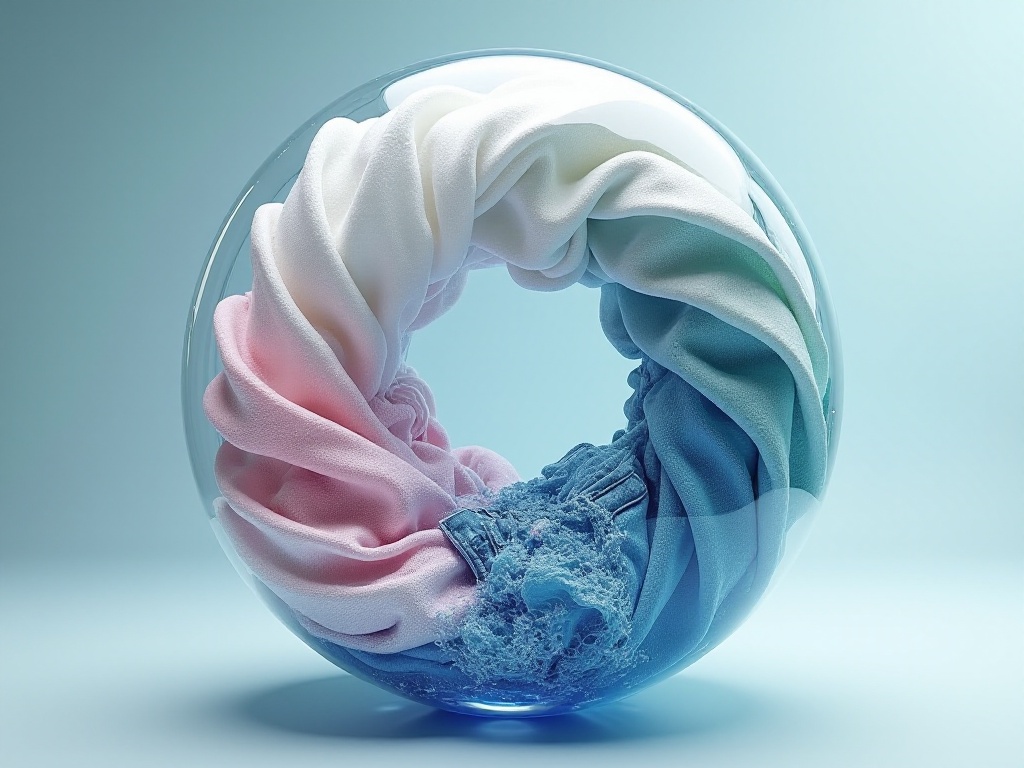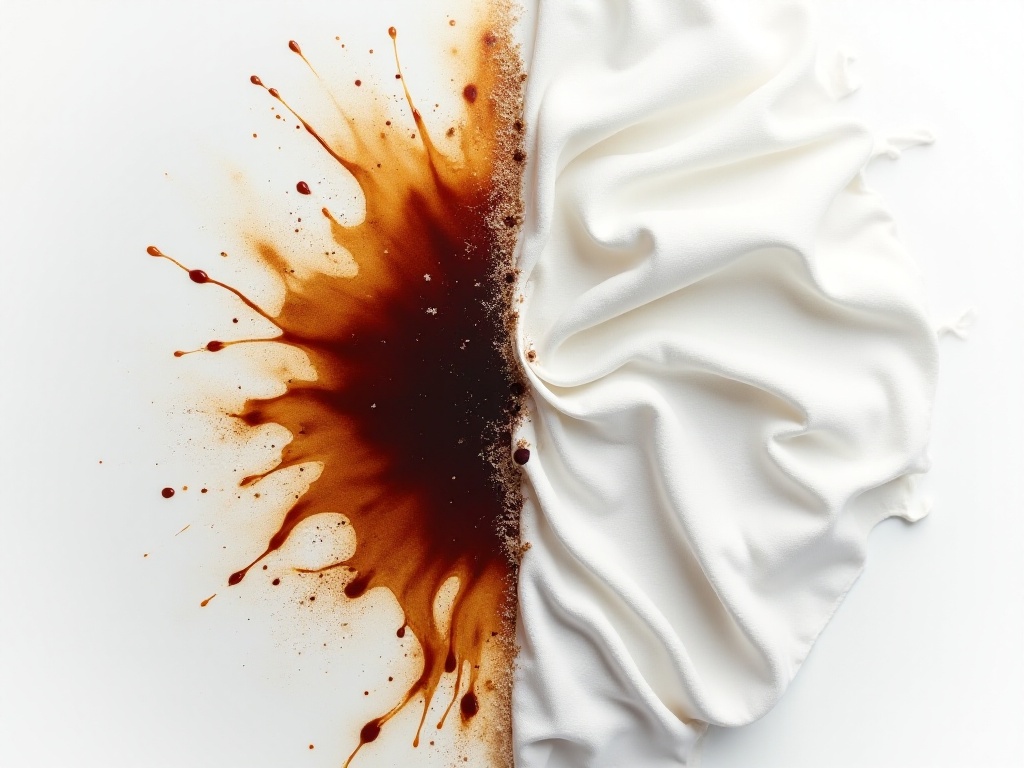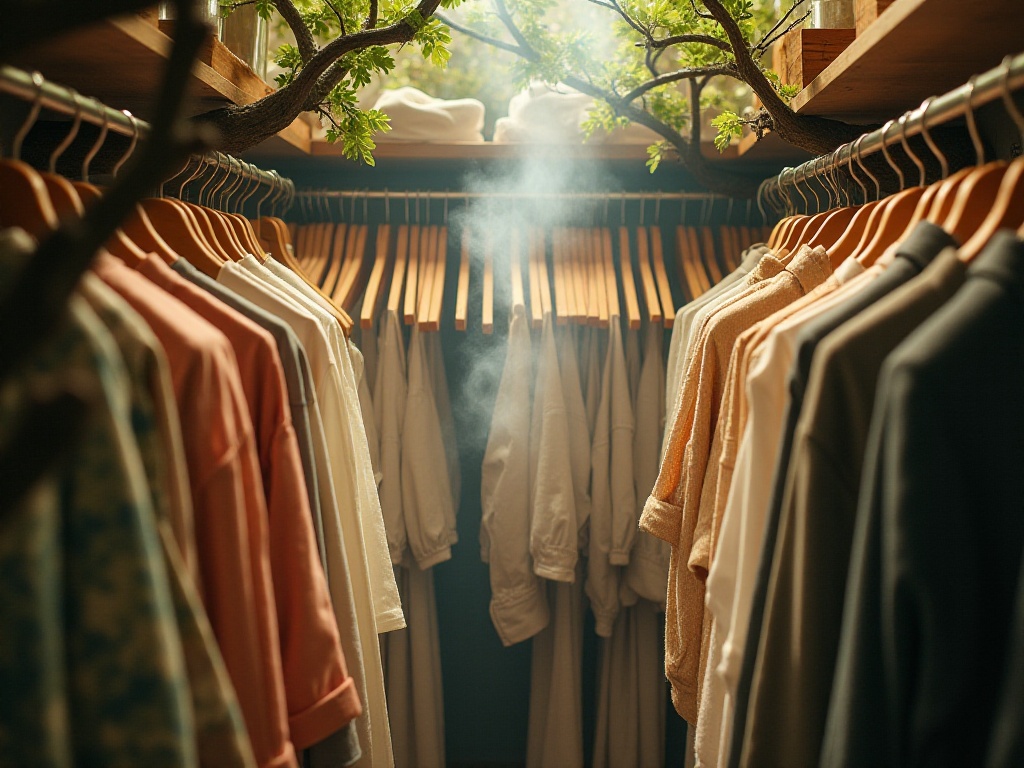
Introduction
As a young professional just starting out, I was overwhelmed by various daily chores. Particularly after living alone, doing laundry - which seemed like a simple task - turned out to be full of pitfalls. I remember carelessly throwing clothes into the washing machine, only to find my new clothes either faded or deformed, which was quite heartbreaking to see.
The most frustrating part was dealing with those laundry care labels - the symbols looked like hieroglyphics and made no sense to me. After three years of exploration and learning, I've finally developed a complete clothing care system. I'm sharing this with you now, hoping to help you avoid the mistakes I've made.
Classification is Key
To be honest, I used to be very casual about laundry, thinking it was just a matter of throwing everything into the washing machine. Until one time, I washed my new dark blue jeans with my favorite white shirt, and that white shirt became a "limited edition" gradient blue. That's when I realized the importance of sorting laundry.
Now I carefully sort my laundry every time. First is sorting by color, which is really crucial. White clothes must be washed separately as they're most susceptible to color bleeding. Light-colored clothes can be washed together, like beige and light pink. Dark clothes should also be washed separately, especially new dark clothes - extra care is needed for the first few washes.
Besides color sorting, fabric classification is also crucial. Delicate fabrics like silk and wool can easily get damaged if washed with rough materials like denim and linen. I now hand wash these delicate fabrics or use the delicate cycle on my washing machine.
Another important point is sorting by dirt level. Heavily soiled clothes, like those with oil stains or mud, must be washed separately. I once made the mistake of washing a work uniform stained with machine oil together with other clothes, resulting in oil stains spreading to everything, which was extremely difficult to clean.

Pre-wash Preparation
After numerous lessons learned, I now thoroughly prepare before each wash. First is checking all pockets - this step cannot be skipped. Once, I forgot to check pockets and washed an important receipt along with some tissues, resulting in not only losing the receipt for reimbursement but also having tissue paper pulp stuck to all the clothes, which was extremely difficult to clean.
Since then, I've developed a habit of carefully checking pockets. Not just pants pockets, but jacket and shirt pockets too. You'd be surprised what you might find - coins, receipts, earphone cables, and even forgotten chewing gum.
The second important preparation is reading care labels. Honestly, I couldn't understand those symbols at first, but through online research and asking experienced friends, I can now accurately interpret most care labels. Symbols with crosses indicate absolute don'ts, like no machine washing or no bleaching. Temperature symbols are also crucial - some clothes can only be washed in cold water as hot water can cause shrinkage or deformation.
Another crucial preparation is immediate stain treatment. I've learned this the hard way - the sooner you treat stains, the easier they are to remove. Once I spilled coffee on a white shirt and thought I'd just wait until laundry day to deal with it. By then, the stain had completely set, and nothing could remove it - the shirt had to be thrown away.
Now I treat stains immediately when they happen. If immediate treatment isn't possible, at least rinse with water or blot with tissue paper - this greatly increases the chances of successful stain removal later. I also keep specific stain removers for different types of stains.

Washing Methods

The Magic of Cold Water
Regarding water temperature, I used to mistakenly believe that hotter water meant cleaner clothes. Until I washed a new T-shirt in hot water, and it not only severely faded but also shrunk. I later learned that cold water is actually sufficient for most clothes.
Cold water washing has many benefits. First, it saves electricity, which is really important for young professionals like us. It can significantly reduce monthly electricity bills. Second, it's gentler on clothes, especially synthetic fabrics and colored clothes, helping them maintain their vibrancy longer.
I now use cold water for most laundry, except for heavily soiled white clothes or when disinfection is needed. I've also noticed that clothes washed in cold water are less wrinkled when dried and easier to iron. Remember to use detergent suitable for cold water for better cleaning results.
Denim Care
Regarding denim care, I was completely clueless before. I used to wash them after every wear and often threw them in with other clothes. This resulted in the jeans becoming increasingly stiff and faded.
Later, I learned from professional denim care advice that jeans don't need to be washed after every wear. Unless they're visibly dirty or smell, washing them every 4-5 wears is sufficient. This not only maintains the fabric's quality but also helps them conform better to your body shape.
There are several tricks to washing jeans. First, turn them inside out to protect the outer color. Second, use cold water as hot water accelerates fading. Finally, don't use the dryer - air drying is best to prevent fading and deformation.
For new jeans, soak them in salt water for half an hour before the first wash to set the color. My jeans now maintain their color much longer thanks to these care techniques.

Special Care
Stain Removal Techniques
Stain removal is truly a science. Different stains require different treatment methods, and using the wrong method can actually make stains harder to remove. I've now developed a complete stain removal system.
For coffee stains, immediate cold water rinsing is crucial - never use hot water as it sets the stain into the fabric. If the stain has dried, use a specialized stain remover or soak in a mixture of white vinegar and warm water.
Oil stains require special treatment too. First, use chalk or cornstarch to absorb surface oil. Wait for about ten minutes, then treat with a degreasing detergent. For fresh oil stains, immediately apply dish soap, gently rub, and rinse with warm water.
Wine stains are among the most difficult to remove. If you spill wine on clothes, immediately blot with paper towels, then rinse with soda water or plain water. For dried stains, treat with a mixture of salt and hot water, or use a specialized wine stain remover.
Fruit juice stains are also common. Rinse with cold water first, then use a specialized fruit stain remover. If you don't have a specialized remover, soak in a mixture of white vinegar and water before normal washing.
Odor Removal
Regarding odor removal, it took me a long time to find effective methods. Especially for workout clothes - if not treated properly, they can retain odors even after washing.
My current method is making a paste with baking soda and hydrogen peroxide, applying it to smelly areas, waiting 15-20 minutes, then washing normally. This works especially well for areas prone to sweat stains and odors, like armpits and collars.
For long-term storage, place desiccants or activated charcoal packets with clothes to prevent musty odors. If clothes already smell musty, soak them in vinegar water first, then sun-dry them - this usually removes most odors.

Proper Storage
After discussing cleaning, let's talk about clothing storage. Proper storage methods not only maintain clothes' condition but also extend their lifespan.
When hanging clothes, choosing appropriate hangers is important. Suits and coats need wooden or wide hangers to maintain shoulder shape. Knitwear and sweaters are best folded, as hanging can cause deformation. If they must be hung, use special non-slip hangers.
Folding clothes also requires technique. T-shirts should be folded to avoid collar deformation. Sweaters should be folded flat, not hung. Jeans can be hung but use special pants clips to avoid knee wrinkles.
Seasonal clothing storage requires special attention to prevent moths and moisture. I place dehumidifiers and moth repellent packets in storage boxes to prevent mold and moth damage. Before storing winter clothes, ensure they're completely dry to prevent odors.
Through these three years of exploration and practice, I've finally established a complete clothing care system. While it might seem complicated, once it becomes a habit, it doesn't actually take much time. Plus, seeing your clothes maintain their condition even after long-term wear brings great satisfaction.
Finally, proper clothing care not only saves money but also contributes to environmental protection. Every well-maintained piece of clothing represents resource conservation. If you have any unique clothing care methods, please share them in the comments. Let's be fashionable while being environmentally conscious together!
Next
Confessions of a Nutritionist: How I Used Scientific Methods to Help 100 Patients Improve Their Eating Habits
A comprehensive guide exploring healthy eating habits and clothing care, covering nutritional principles, dietary control, and eco-friendly garment maintenance methods for a healthy and sustainable lifestyle
After Three Years, I Finally Figured Out How to Do Laundry - Here's What I Learned
A comprehensive guide to clothing care, covering daily washing classification, special fabric maintenance, stain and odor removal, drying and storage techniques, helping readers master scientific clothing care methods to extend garment life
Save Your Precious Wardrobe: Laundry Tips to Keep Your Clothes Looking New
A comprehensive guide to clothing care covering sorting methods, pre-treatment techniques, washing instructions, drying and storage solutions, and effective stain removal methods for various fabric types
Next

Confessions of a Nutritionist: How I Used Scientific Methods to Help 100 Patients Improve Their Eating Habits
A comprehensive guide exploring healthy eating habits and clothing care, covering nutritional principles, dietary control, and eco-friendly garment maintenance methods for a healthy and sustainable lifestyle

After Three Years, I Finally Figured Out How to Do Laundry - Here's What I Learned
A comprehensive guide to clothing care, covering daily washing classification, special fabric maintenance, stain and odor removal, drying and storage techniques, helping readers master scientific clothing care methods to extend garment life

Save Your Precious Wardrobe: Laundry Tips to Keep Your Clothes Looking New
A comprehensive guide to clothing care covering sorting methods, pre-treatment techniques, washing instructions, drying and storage solutions, and effective stain removal methods for various fabric types


